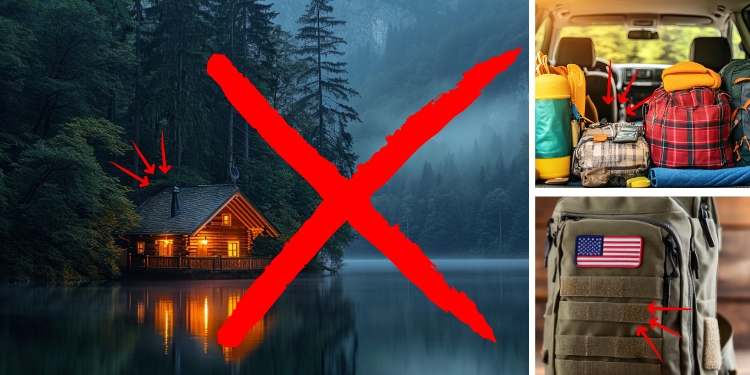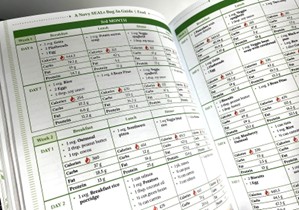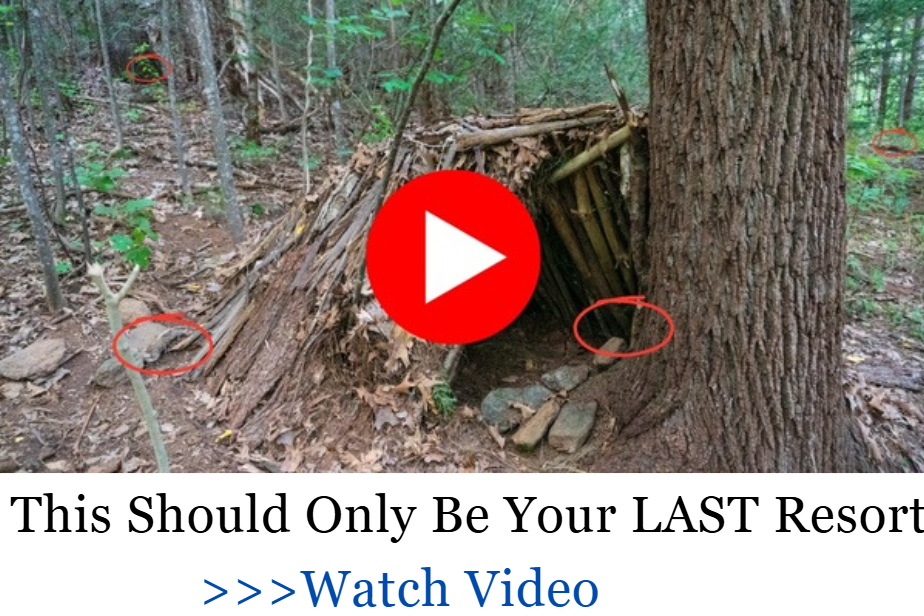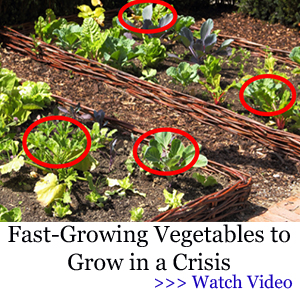Better Than Bugging Out – Ask a Prepper

When disaster strikes, the first instinct for many is to run — grab your bug-out bag, hit the road, and disappear into the woods. But what if leaving and bugging out is actually the worst move you could make? The truth is, bugging out should be your last resort, not your first response. For most people, staying put — bugging in — offers a far better shot at survival. Why abandon the place where you’ve spent months, maybe years, prepping?
Your food, water, tools, shelter, and even your security systems are all right there. Once you hit the road, you’re exposed, vulnerable, and at the mercy of the chaos outside. Let’s break down the top reasons why bugging in beats bugging out, and how to fortify your home into a true safe haven when things go south. Before you flee, read this — it might just change your survival strategy forever.
Is Bugging In Safer than Bugging Out?
That doesn’t mean bugging outshould always be ruled out. In certain scenarios, it may be the only reasonable course of action. For example, if a hazardous material incident occurs and a thick cloud of poisonous fumes is heading straight for your home, remaining in place could be a fatal mistake. The same applies if your area is engulfed in flames, or if tensions of nuclear conflict are escalating and you happen to live within sight of a military submarine installation.
There will be moments — and they’ll be obvious when they happen — where leaving is the most logical choice to protect your life. However, in the majority of emergencies, sheltering in place often proves to be the more practical and strategic option. Here’s a breakdown of why staying put might give you a better shot at making it through the worst.
Access to Gear & Supplies
Let’s face it — you can’t carry your entire prepper stockpile on your back. Whether it’s gallons of water, canned goods, first aid kits, or solar panels, most of your critical gear is stored at home. Bugging out limits you to what you can haul, and even with a vehicle, you’re constrained by fuel, space, and mobility.
Staying home means you keep access to tools, weapons, and medical items that could mean the difference between life and death. Running out of antibiotics, clean water, or power sources while on the road can cripple your chances. When you bug in, you’re surrounded by your resources — the very ones you’ve spent months or years collecting.

You Control The Territory
Your home is more than just a shelter. It’s your stronghold. You’ve spent time fortifying it, customizing your defenses, storing supplies, and planning escape routes. You know every corner, every creak, every potential vulnerability. That level of familiarity can’t be replicated in the wild or in a temporary location. Staying put gives you the upper hand: you know where the tools are, where you’ve stashed extra food, how the terrain behaves during storms or blackouts.
 Leaving all of that behind to face uncertainty is a gamble. In a crisis, control is everything — and when you bug in, the battlefield is one you’ve prepared. Why surrender that advantage?
Leaving all of that behind to face uncertainty is a gamble. In a crisis, control is everything — and when you bug in, the battlefield is one you’ve prepared. Why surrender that advantage?
Former Navy SEAL Joel Lambert knows exactly what it takes to defend and secure your home when everything goes south. After facing countless threats in the field, he’s packed years of experience into one powerful survival manual.
In this step-by-step guide, Joel shows you how to protect your home, your family, and your life when SHTF. Here’s just a glimpse of what you’ll learn:
-
How to make your property looter-proof
-
How to use silent alarms and traps
-
The first thing to do if martial law is declared
-
Clever tactics to outsmart FEMA in the next crisis
-
How to stay completely off the government’s radar
You’ll also discover how to build a 3-month food stockpile, how to communicate during a blackout, and the must-have survival items every home should include. This is more than just a book. But there’s a catch: only a limited number of copies were printed. If you want in, you’ll need to move fast.
👉 Here is Joel’s personal discount link – get 68% OFF. Grab it before it’s gone!
Easier to Care for Pets and Livestock
For many preppers, animals aren’t just companions — they’re part of the survival plan. Chickens provide eggs, goats give milk, and dogs offer security. Bugging out makes caring for them nearly impossible.
Transporting livestock is a logistical nightmare, and even traveling with pets is tough when resources are scarce. Bugging in allows you to maintain your homestead rhythm: feeding routines, shelter, and veterinary care.
Your animals know the space, and you have what you need to care for them. Leaving them behind isn’t just heartbreaking — it could mean losing a vital part of your food and defense system.
Related: Your Bug Out Bag Might Actually Be Useless
Safer for Your Family
If you’ve got young kids, elderly parents, or someone with a disability, bugging out becomes a logistical nightmare. Long treks, exposure to the elements, and chaotic environments can quickly overwhelm vulnerable family members. Staying put means stability: a roof overhead, beds to sleep in, and controlled temperatures.
You can continue routines, administer medications, and protect your loved ones in a secure setting. In contrast, being on the move introduces constant dangers — from hostile encounters to accidents or illness without proper care. Your home is a shield, and when your family is at its most vulnerable, it’s where they’re safest.

Energy Efficiency
You’ve probably invested in energy solutions for your home: solar panels, propane systems, backup generators, EMP Cloth, maybe even a wind turbine. These setups are designed to keep you powered up when the grid goes down. Bugging out strips you of that infrastructure.
You’re reduced to batteries, car inverters, or scavenging — and those don’t last long. When you stay home, you can harness sustainable power, run water filtration systems, and cook without relying on campfires or risky, improvised methods. Energy is life in a crisis. Why give up the systems you’ve built when staying put means keeping the lights on?
Related: Hidden Signs Your Neighbor is a…
Food Production Can Continue
If you’ve invested in self-reliance, you probably have a garden, greenhouse, or even a food forest. Staying home means you can keep growing and harvesting food while others are scavenging or starving. When bugging out, you leave behind months (or years) of work. Seeds don’t grow on the move, and foraging is unpredictable at best.
At home, your soil is prepped, your tools are ready, and your knowledge of the microclimate gives you a huge edge. You’re not just surviving — you’re producing. That’s real long-term sustainability in a crisis. Why abandon it when your food security is right outside your door?
 If you’re interested in growing all the food you need and becoming completely independent from the grid, you can learn everything from scratch—even with no prior experience.
If you’re interested in growing all the food you need and becoming completely independent from the grid, you can learn everything from scratch—even with no prior experience.
Ron and Johanna Melchiore have spent 43 years mastering off-grid homesteading. Their lifetime of knowledge is packed into one powerful resource: The Self-Sufficient Backyard.
This guide teaches you how to turn any piece of land into a productive, self-reliant garden. Whether you’re just starting out or looking to level up your homestead, this is where real self-sufficiency begins.
Can You Also Make it In The Wilderness?
At the same time, if you ever find yourself forced to bug out—especially into the wilderness—you need to be truly prepared to handle it. That’s where the Wilderness Long-Term Survival Guide by Dr. Nicole Apelian comes in.
This guide is packed with practical, field-tested knowledge to help you survive when the crisis hits and you’re far from home. Inside, you’ll discover:
-
How and where to set up traps for small game
-
Wilderness fishing techniques
-
How to tap trees for water and nutrients
-
How to preserve food in the wild
-
How to cultivate land and grow food off-grid
🧈 If you’re curious about how people truly survive long-term in the wild, this guide is a goldmine!
What About Water?
Besides food, you’ll also need water to survive. Especially when a crisis catches you off guard, bugging in remains the smartest option when it comes to securing water. Out in the wild, you need serious skills—and a whole lot of luck—just to find enough water to stay alive.
At home, the danger is different. You’re fully dependent on the public water supply. Truth be told, if you depend solely on the public water grid, you’re gambling with your survival. When disaster hits, your tap could dry up in hours… and without water, your body, your mind, and your odds of survival will fail just as fast.
But here’s the thing—there’s a far simpler solution than chasing puddles through the wilderness. And you can use it even if you’ve stocked up on bottled water… because let’s face it, those supplies will run out eventually.
We’re talking about this breakthrough device that can extract up to 10 gallons of clean water per day—straight from dry desert air. No well, no stream, and no plumbing required. In an age where access to water is life or death, this off-grid water generator could be your best shot at staying alive.
Final Thoughts
Every prepper needs to be ready to evacuate if the situation demands it—but in many cases, staying put is the wiser choice. Remaining at home offers greater safety, long-term sustainability, and full access to your supplies. While it’s essential to have a fallback location planned, choosing to stay should be your first option when conditions allow. Leaving should be a last resort.
Sheltering in place gives you the advantage of familiarity, control, and security. You know the layout of your home, your defensive setup, and where everything is stored. On the other hand, bugging out means facing unpredictable dangers, limited resources, and potential chaos. Be equipped for both scenarios—but when it’s possible, hold your ground and protect what’s yours.
You may also like:

11 Fatal Mistakes To Avoid When Bugging Out
How To Charge Your Phone When There Is No Electricity (Video)
Never Do This When You Leave Your Property
This Is What You Might Forget When Bugging In
Overrated “Survival Skills” You Don’t Actually Need
Read the full article here









